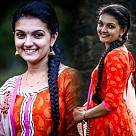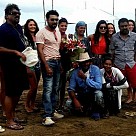PHOTOS & STILLS - GALLERY

IN-FILM BRANDING
A typical media plan of an aggressively marketed brand will comprise various touch-points of press, radio, outdoor, television, activation and the more recent digital and social media advertising. Besides cricketing avenues in India, cinema is seen as another important medium where marketing boardrooms are increasingly exploring options for amassing a share of the audience’s attention through in-film branding and product placements. In a cluttered advertising world, in-film branding is seen as a mutually beneficial association to both the production house that gets the extra publicity budget for marketing / promoting and also seen as valuable to the brands that get to live on forever in the film. It guarantees a repeated exposure through television broadcasts when acquired by channels, DVDs, youtube streaming and even when local cable channels play that ‘putham puthu padangal’ in your area.
While Hersheys chocolate was the first brand to be featured in the Oscar winning silent film ‘Wings’, the germ of in-film advertising in India was first used in the Hindi film ‘Chalti ka Naam Gaadi’ with yesteryear actor Madhubala sipping on Coca-Cola. Bollywood in recent times has seen a spurt in this hard-to-ignore medium with the restless audience switching their channel or minds off to the more traditional form of advertisements. Cosmetic brand Lakme launched, in tandem with the Kareena Kapoor starrer Heroine, an entire range of branded make-up under the Absolute collection. Apparel brand Jealous21 introduced a special clothing line inspired by the clothes worn by Kareena in the movie. My google search tells me that the clothes worn by lead actress Sonam Kapoor of ‘Aisha’ were created in concurrence with Salvatore Ferragamo and Christian Dior -- the first time such international luxury brands had so intimately partnered themselves to a star and script in a Bollywood production. It’s a different thing that the movie chosen didn’t exactly set the box office on fire but it gave the brands a stupendous reach and connect with its intended TG.
In-film branding needs to be relevant to the plot of the movie and not shoved upon the moviegoer’s throat to make them choke. Shah Rukh Khan was seen vigorously elucidating the new model of Nokia Lumia 920’s features to Deepika (who couldn’t care less as long as she could make calls) in the train scene of Chennai Express as an extension of his association with the brand. It almost seemed like an ad break in the middle of a movie with the hero selling a phone than wooing a woman. Getting James Bond to use a soon-to-be-launched McLaren or Aston Martin for example in the next installment as part of a continuing tradition of 007 riding incredibly sleek machines is a smart streak of future-ready automotive integration in films. The impact of reaching through this medium may spill over to the unintended audience for niche brands but it definitely helps to create the desired aspirational imagery.
A lot of action sequences and travel destinations involving heavy expenses and permissions (like a flight sequence or a popular tourism location) can be smartly handled through tie-ups with airline brands and tourism ministries of that country respectively. George Clooney’s own production ‘Up in the Air’ deftly retained the film’s creative credibility despite the subtle usage of American Airlines and Hilton hotels getting their fair share of exposure at various pertinent points in the film. The poetic beauty of Spain was well marketed in a film like ‘Zindagi Na Milegi Dobara’ that even boosted the Spanish tourism by 32 percent in 2011 when the film released with tourists flocking to La Tomatina festival. It can work either ways with both parties involved not having to pay one another or where a lesser known brand gets a better exposure by associating with the movie within a reasonable budget.
As for the Tamizh film industry goes, we still are in the marsupial stage of in-film advertising for the audience to get habituated into an unobtrusive placement of products and brands. The most common usage of this medium has been done in scenes that involved real time news channels lending permission to display their logos and news reporters in broadcasting a certain capsule that comes as a news flash in the film. The surprise hit film ‘Pizza’ saw a fitting brand presence of ‘Pitstop’ branding from where the protagonist works and delivers his pizzas in the film and other incidental exposure of various other food and beverage brands like Lays, Red bull and Coca cola strategically captured as part of the frames that involved the restaurant scenes.
In-film branding has gone beyond just product placements with movie titles like Ferrari Ki Sawaari, Mere Dad ki Maruti or even in the lyrics of the songs of Fevicol and Zandu Balm featuring in the Dabangg series of films. Both the filmmakers and the brand managers have an age-old innovation baton to explore much more through relevant branding opportunities that glide smoothly with the requirement of the movie’s script. It calls for specialized in-film marketers who can identify the right banner with an appropriate script that lends itself to the brand usage without annoying the viewer and force-fitting the product features. As an alternative to the more expensive celebrity endorsements and high television costs in buying airtime, in-film placement calls for an expert to be closely working during the scripting stage to identify possible brands that can be associated with the film and pitching it to brand managers during the pre-production stage itself. Like it or hate it, embrace it or reject it, in-film branding is likely to capture more frames in the scenes, more lyrics in the songs and more space in your mind.
Respond to anujaiyer@behindwoods.com
Behindwoods is not responsible for the views of columnists.
Behindwoods is not responsible for the views of columnists.
FACEBOOK COMMENTS
OTHER LATEST COLUMNS
ANUJA IYER'S OTHER COLUMNS
- In-film branding
- A point of view
- The Political Trail
- Celeb Abrasion
- From paper to film
- Respite from stereotype
- Ring in a Resolution
- The End
- ArthamuLLa DeepavaLi
- Thoughts from my Stratosphere
- Much in touch
- Tripped and rupeed
- Unfinished homework
- Like ah, No like ah?
- Classical touch
- An untimely frost
- 6 seconds to sway
- 100 and not out
- Galatta Kalyaanam
- Connections and conversations
- An hour with Haasan
- Eulogy
- Does age matter?
- Any Votes for devotion?
- The whole six yards
- Rejuvenating Revathy
- Madras Nalla Madras
- Audience beware
- Smile OK Please.
- Changing with the times
- Staging Live
- Lateral Triangle
- How to name it
- A magical morning
- Chromosome XX
- The difficulty of being good
- Whats In A Day
- Why this Pogaveri?
RELATED LINKS
- Chinmayee - Rahul Wedding Reception
- Chinmayee - Rahul Wedding Reception
- A point of view
- Pongadee Neengalum Unga Kadhalum I II
- The Political Trail
- Celeb Abrasion
- From paper to film
- Respite from stereotype
- Ring in a Resolution
- The End
- The End
- ArthamuLLa DeepavaLi
- Thoughts from my Stratosphere
- Much in touch
- Tripped and rupeed
Tags : Anuja Iyer
ABOUT THIS PAGE
This page hosts the views of the authors of the column. The views are generally about films, movie reviews, movie news, songs, music, film actors and actresses, directors, producers, cinematographers, music directors, and all others that contribute for the success or failure of a film. People looking for movies online, movie reviews, movie analysis, public response for a movie, will find this page useful.











